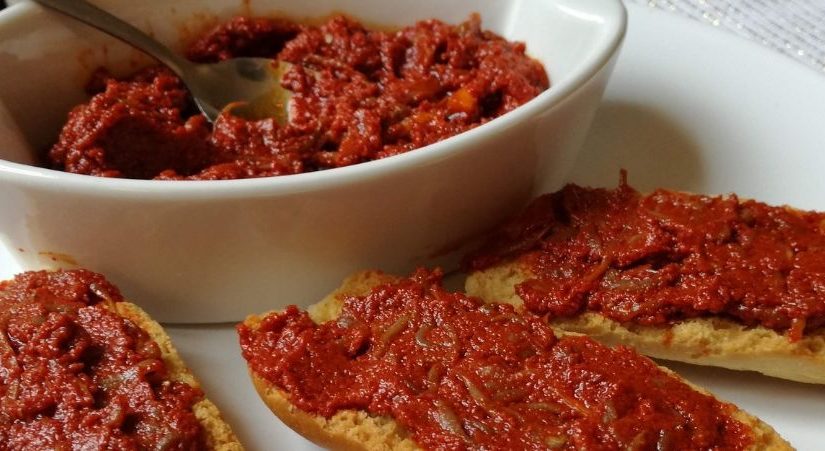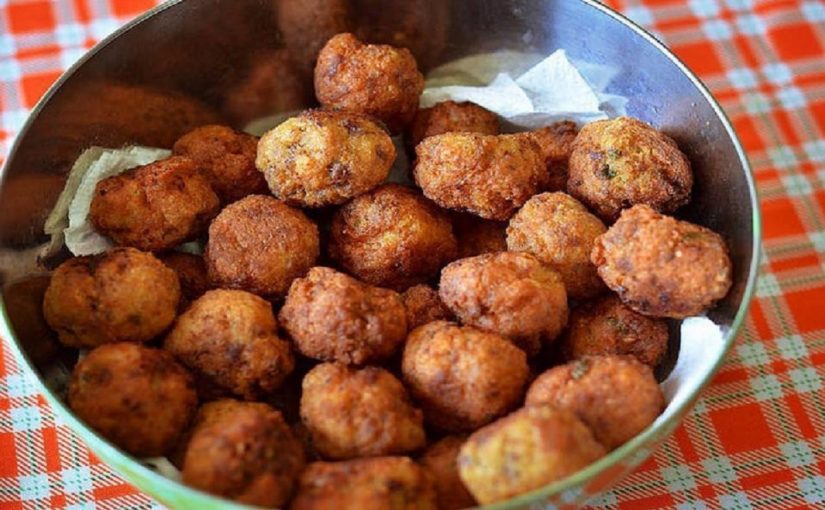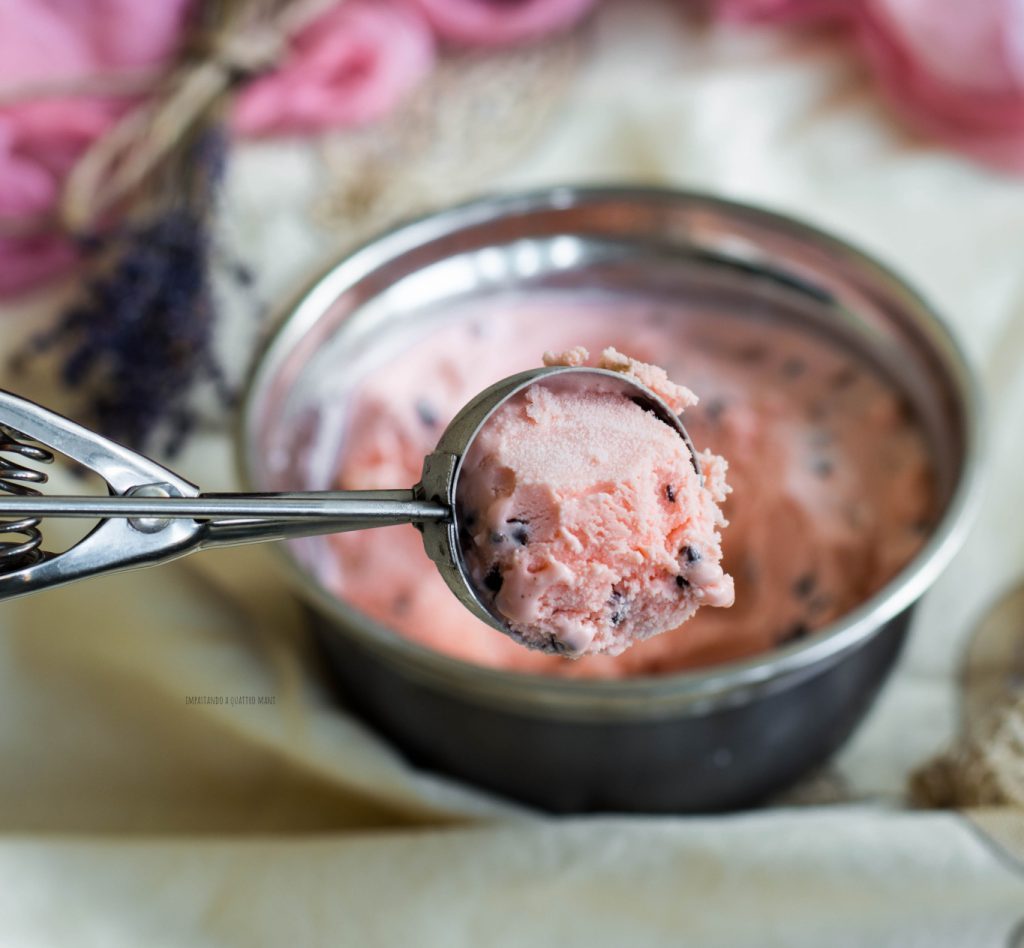25.8.2019
There is a goodness inside Calabrian cuisine, the so-called “Sardella” or “Rosamarina”, it comes from a cream of pilchard, a mixture of newborn fish, which in local dialect is the “nunnata” (namely a newborn fish).
Even if the ‘nduja (a very spicy cream of salami) is the identifying product of Calabria, especially abroad, we could consider this cream of pilchard as the sister of the famous salami’s cream, but in a fish version.
The names of this caviar of newborn fish can vary, indeed this is called “rosamarina” on the Tyrrhenian Sea, while on the Ionic coast it is called “sardella”.

HISTORY
It is mostly certain that that the pilchard is a revisitation of the ancient “Garum” of which the ancient Romans were delighted. This was a fish-based sauce, but less refined than the version made in Calabrian homes.
– The Garum is mentioned 20 times by Marcus Gavius Apicius (in his famous cookbook “De re coquinaria”), who was a Roman gourmet and lover of luxury, who lived sometime in the 1st century AD, during the reign of Tiberius.
– Pliny the Elder in Naturalis historia (XXXI, 93 ff.) said that the best garum was the garum sociorum, made with mackerel and coming from Spain, produced by a Tunisian society of Phoenician origin, which it exported mainly to Italy. This was expensive as a perfume. There were also famous garum factories in Italy, Campania, Pompeii, Clazomene and Leptis Magna.

– Seneca in a letter to Lucilius (Epistulae ad Lucilium, XV, 95, 25), launching his arrows against food excesses, especially against the garum: “illud sociorum garum, pretiosam malorum piscium saniem, non credis urere salsa tabe praecordia?” (“And that sauce that comes from the provinces – is the garum sociorum of which also Pliny spoke – an expensive mess of dead fish, don’t you think that you burn your guts with its spicy rot?”).
– Describing the dinner offered by Trimalcyon in Satyricon (36, 3), Petronius describes in great detail a huge tray, in the center of which a hare in imitation of Pegasus prevails, and at the corners four statuettes of Marsyas, from whose garnets flow garum sauce and pepper on a fish placed in a canaletto supported in such a way as to seem alive and to swim in the sea.
– Finally, Martial – in Epigrammata (XI, 27, 2) – he praises a friend of his called “Flaccus” who can resist the smell emanating from a girl who drank six measures of garum. Further, in the epigram III, 77, 5 he criticizes the use of “putris allec” (putrid herring) in dishes.
Conclusively, this quick list of historical testimonies speaks a lot about our sardella, like a fantastic legacy of ancient gastronomy and returns with a pinch of nostalgia a precious tradition.

TODAY SARDELLA
The Calabrian sardella is a delicious heritage of Mediterranean cuisine, but it is cheap and good.
Instead, the garum derived from the entrails of the fish which were treated together with a large quantity of salt (indeed, the mixture was macerated in the sun for long periods, releasing the liquamen, very similar to the current anchovy sauce) and it was expensive. Garum was a product for rich families who could afford the product by paying considerable sums, and it was used as a condiment.
THE INGREDIENTS
The main problem for the preparation of sardella, this wonderful fish cream, is to find the raw material, that is the juvenile sardines. Their fishing is regulated by very strict laws and can only be carried out between January and March, giving exception to the article 15 of the European CE 1967/2006 regulation, which prohibits this fishing.
Therefore, a good substitute is on sale, easily available: the so called ice-fish that is found, defrosted, in the fish market or, frozen, in the supermarkets. However, it is not suitable for the preparation of our sardella of pilchard, that obviously needs newborn anchovies or sardines, and has a color tending to gray as opposed to ice-fish, that is white.
RECIPE
Ingredients:
- 1 kg of newborn pilchrad
- 50 grams (minimum) of ground hot pepper
- Dry wild fennel
If you want, you can add sweet ground chilli.
Preparation:
- Wash the newborn fish well until the water is clean.
- Put the fish in a container with salt and put a weight on the cap.
- Squeeze the fish sauce and season with the red pepper and wild fennel.
- Homogenize and place in glass jars with a layer of olive oil.
Use
The pilchard can be eaten purely on the bread or it can be used to flavor pasta. It is also excellent with eggs, as an omelette, or on a fried egg. Good in potato boats or in the typical “pitta”, a soft bread.

THE PLACE
Sardella is a versatile product. The only care is eating it in small quantity because it is particularly spicy.
Crucoli (KR) is the town of this Sardella, but also Cirò Marina (KR), Cariati (CS) and Trebisacce (CS) claim paternity. Crucoli promotes this typical product with a festival that takes place continuously in the historic center since 1970, every second Sunday in August.
It is protected as Traditional Italian Agri-food Product (so called PAT). The Pat are products included in a special list, established by the Ministry of Agricultural, Food, Forestry and Tourism Policies with the collaboration of the Regions.
Considering that the ban on fishing may make it lose its production, consumption and tradition, if you come to Calabria it would be a shame not to try it!











